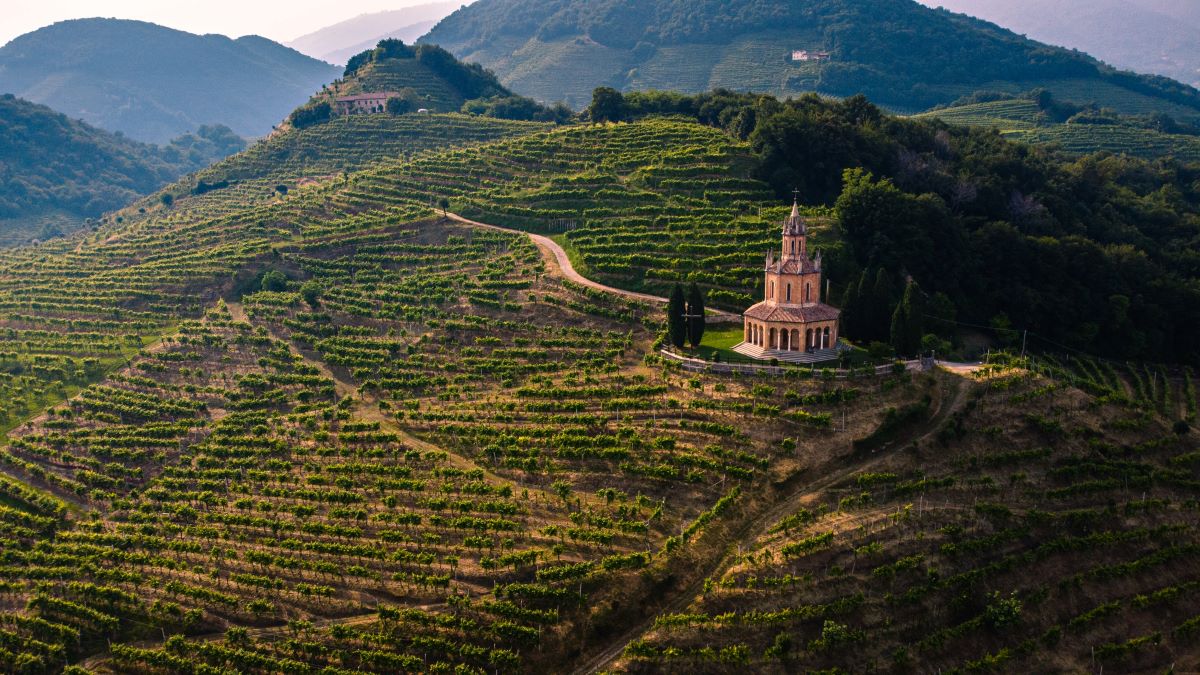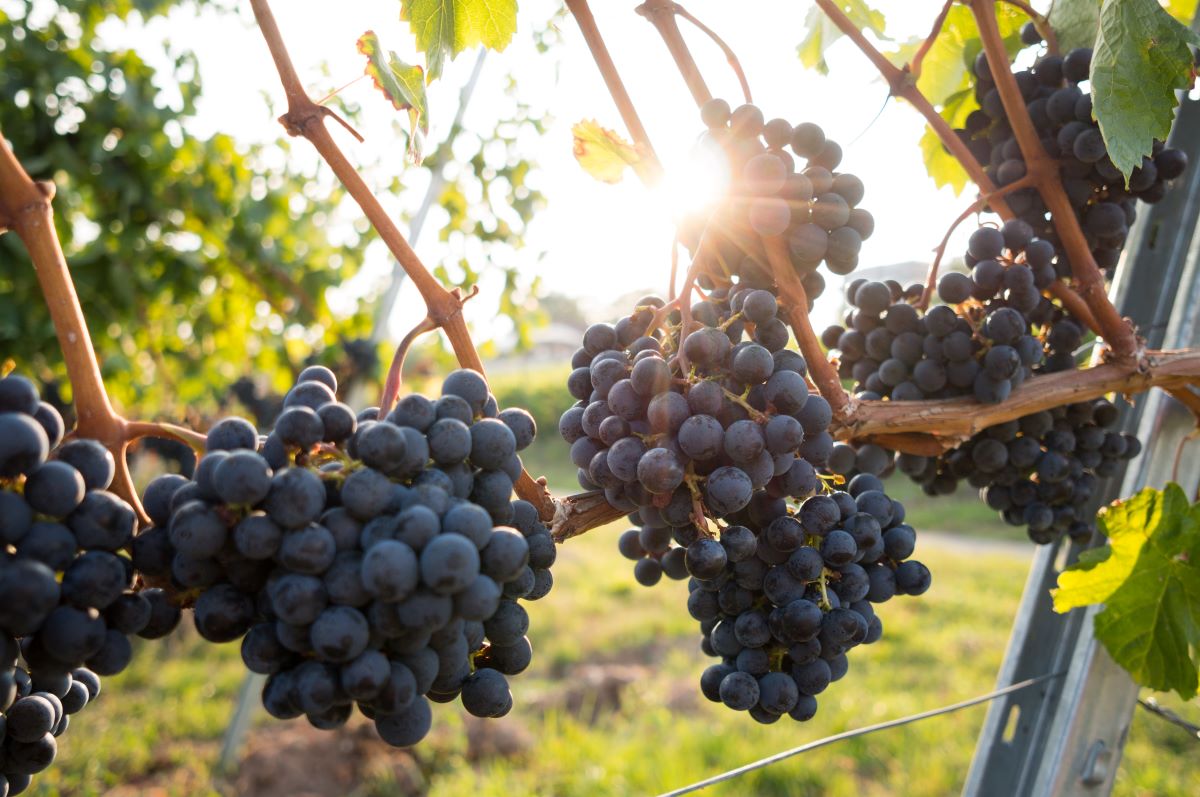Would you have guessed that the same region that is home to La Serenissima Venice, also happens to be one of Italy’s largest wine producers? That’s right, move over Tuscany, Veneto wines are not to be missed.

With a unique climate, native grapes, and a wine-making tradition that spans further back than the Romans, Veneto is one of the star wine regions of Italy. One wine that you are sure to know already is Prosecco, but the region has over 40 quality-controlled appellations. Let’s start sipping our way through the many wines of Veneto.
Wine in Veneto: A brief history
Before we get into all the different wines you can enjoy in this region, we should take a little dive into the region’s wine-making history.
Wine grapes have been cultivated here since before the 9th century BC. Local tribes such as the Rhaeti, Veneti, and even northernmost groups of Etruscans all worked to tame the vines and incorporate wine into their everyday culture.
When the Romans came along, the Veneti tribes struck peaceful alliances with them. Veneti people were awarded citizenship, while the Romans extended their empire and got a taste for some excellent wines. In fact, the Retico and Acinatico wines of Veneto were some of the Empire’s favorites. While these wines have changed, they are very similar to the modern-day Recioto wine you can enjoy.
The Venetian Republic also allowed wine production to flourish, however unfortunately it was not to last. The decline of the republic, combined with a terrible freeze in 1709, phylloxera, and the world wars, meant that Veneto’s wine production didn’t catch back up until the 1960s.
But since then the region has fully redeemed itself, becoming Italy’s most productive wine region! More than high production, they’ve brought many unique bottles and varieties back to life, ever-diversifying the Italian wine offerings.

Grapes
One thing that makes Veneto wines so delicious is their particular grape varieties. More than 60% of the cultivated wines are native Italian grapes. Those that are not international favorites like Merlot, Cabernet, and Pinot Grigio, even though these have been seen as “traditional” to the region since the 1800s.
Here are a few of the grape varieties we will be talking about in this guide to Veneto Wines:
- Glera – the white grape behind Prosecco production, accounts for 28% of all Veneto grape cultivation.
- Corvina – one of the noble three used for many regional blends like Valpolicella and Bardolino. It has high acidity and thick skin, but only moderate tannins.
- Rondinella – another of the magic three used in many blends. A low tannin grape that produces an elegant light-bodied wine.
- Molinara – is often used in small portions in blends to add acidity to the wine.
- Garganega – one of the most ancient varieties in Italy and the second most cultivated in Veneto.
Now that you have a feel for Veneto’s wine history and some classic grape varieties, let’s explore the different Veneto wines you might find!

Prosecco
Everyone’s favorite, budget-friendly sparkling wine, Prosecco is what makes Veneto one of the largest wine producers in the country. Prosecco is made with Glera grapes, and can be produced within a few different appellations: Conegliano Valdobbiadene Prosecco DOCG, Prosecco DOC and Asolo Prosecco DOCG.
Prosecco DOC actually covers a much larger area spanning the region of veneto and neighboring Friuli venezia Giulia. While Conegliano Valdobbiadene and Asolo are smaller areas within Veneto.
There are a few reasons for its international dominance. The first is that the Glera grape is quite productive. The second is that Prosecco is produced with a faster method than other classic sparkling wines like Franciacorta or Champagne. The latter wines are made with metodo classico, a long process where their second fermentation (which gives them the bubbles), is done in the bottle over months and months.

Prosecco on the other hand goes through a pressure-controlled second fermentation in steel tanks, meaning it can be ready in hours or days. Of course, every producer has their own methods to determine the timing and pressure to produce their bottles.
Prosecco from all appellations will bring hints of white flowers, rose, pear, citrus, and a little almond finish to your palate. Typically you’ll find Prosecco made with 100% Glera, either in an Extra Dry or Brut style. Those of you who like your sparkling wines a tad sweeter look for Extra Dry. While those of you looking for a crisp refreshing glass, grab a bottle of Brut.
And if you are looking for the finest bottle of Prosecco? Look for the Cartizze sub-zone. This area’s particular microclimate produces the best Prosecco with aromatic complexity and crisp acidity.
Of course, there’s nothing like just a calice of Prosecco to end the day, but if you want to mix things up, try out two favorite Prosecco-based cocktails:
- Bellini – The Bellini is a classic Venetian cocktail made with Prosecco and fresh peach nectar. It was a seasonal specialty made famous at Harry’s Bar. Now you can enjoy it at any self-respecting Venetian spot.
- Spritz – The symbol of Italy’s aperitivo, the Spritz! This cocktail is made with Prosecco, Soda, and the addition of a select bitter. Often it is made with the traditional Aperol, but can also be made with other aperitifs like Campari or local Venetian Select. While visiting Venice a Spritz is a staple, usually priced only at a few euros, and served with the city’s signature: olives.

Valpolicella
Apart from everyone’s favorite sparkling, Veneto is renowned for the rich red wines of the Valpolicella wine region. It is here where Roman’s beloved wines were produced. Today the most enjoyed wines of this region are: Valpolicella DOC, Valpolicella Ripasso DOC, Amarone DOCG and sweet Recioto DOCG.
All of these wines are made with the same blend of Corvina or Corvinone, Rondinella, and often a tad of Molinara. In the past Molinara was essential, but since 2003 producers have been experimenting with trading it for other local varieties.
Valpolicella DOC
Light and easy to drink Valpolicella DOC is known as the “starter” wine of the region. It is a great choice with aperitivo or lunch. It’s a refreshing dry red with notes of sour cherries, flowers, and a bitter almond finish. There is also a Superiore version which can be aged longer and provides a heavier version of the wine.
Valpolicella Ripasso DOC
This is a true one-of-a-kind wine. Making a Valpolicella Ripasso DOC involves taking an already made Valpolicella wine, then pouring it over the leftover grape skins from the production of Amarone and Recioto. These grapes have been left to dry so have higher sugar content. This unique blending technique creates a richer wine, that while still fairly dry has a slightly soft and sweet edge to it. The result is a full-bodied wine, with higher tannins, and longer aging potential (meaning it is great to take a bottle home for your cellar).

Amarone DOCG
This is one of the most prestigious wines in the area. Amarone is made by air-drying grapes to allow them to concentrate their sugar and flavor. Then fermentation takes full effect to leave no residual sugar. Finally, you are left with a dry, elegant red wine with velvety tannins. You’ll notice the aromas of berries and dried fruit, tobacco, licorice, chocolate, coffee, and spices.
Recioto DOCG
This wine is a little different from the others, in that it is a sweet passito. Recioto is a dessert wine made from grapes that have been left to dry and concentrate their sugars. It is deep ruby, and fairly high in alcohol, with notes of berries, dried fruit, maraschino cherries, and a rich chocolaty sensation.
Bardolino
Rosè lovers – this is the region for you! Bardolino is known for its light red and rosato – rosè style wines.
This Veneto wine region is located just along the coast of Lago di Garda, in a microclimate known as “Riviera degli Ulivi”, the Olive Coast. It is here that the warmth of the lake, together with the valley of the mountains creates a temperate climate excellent for wine and olive production, even this far north!
Wines are made with a blend of Corvina, Rondinella, and Molinara. They are light and fresh wines that should be enjoyed young. You’ll notice delicious notes of flowers, grapefruit, and cherries in the glass.
A perfect wine for a summer afternoon, easy aperitivo, or paired with local freshwater fish!

Soave
Don’t worry white-wine lovers, there are plenty of Veneto wines for you to sip on as well! One of the best regions to look out for is that of Soave. Another wine produced since ancient times, and enjoyed by the Romans, the Visigoths, and Venetians throughout.
This zone was so valued, that it became the first white wine appellation to be recognized by the Italian authorities! You’ll find these hills to the northeast of Verona, nestled next to the Valpolicella area.
Soave DOC wines are made with a minimum of 70% Garganega, though many producers choose to produce 100% varietal wine. It is a light and fresh wine with fruity notes of tropical fruits and a tad of almonds.
You’ll also be able to find a spumante version of this wine or a more complex Superiore bottle. The Superiore version has a stricter production area on the map and must be released slightly later in the year. This allows the wine to age and refine slightly.
Other Veneto Wines
If you haven’t had your fill of Veneto wines, don’t worry, there are plenty more to discover. Keep your eye out for wines from these appellations: Lugana DOC, Gamebllare DOC, Lessini Durello DOC, Piave DOC or Lison DOCG.
Want to get an exclusive look at the ins and outs of Italian food culture? Join our Venice at Sunset: Cicchetti, Food & Wine Tour to sample several types of regional food – and wine – with a local expert!

An Italy local for nearly 10 years, Evelyn has traveled to nearly every region getting overly excited about cute doors and nonni cafes. She’s an archaeology and art history major who fell in love with Italian wine, getting her Sommelier and Italian Wine Scholar certifications. She’s transformed her passion for La Bel Paese into a travel planning and relocation consultancy with Colline Alle Montagne. You’ll find her on Instagram @collinemontagne, always sipping a glass of wine and sharing the authentic life in Italy.